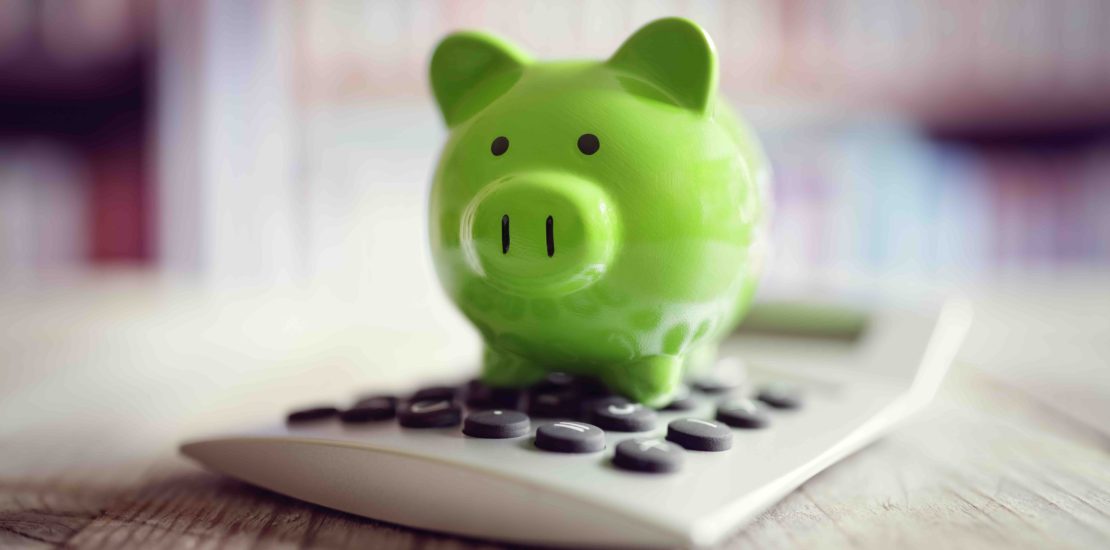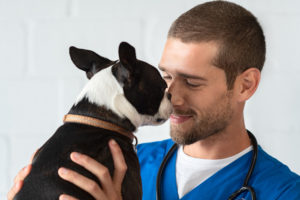- June 17, 2020
- Posted by: optimaadmin
- Category: Which Dog & When

Must Knows to Select the Best Dog for You- #3 of 5, Costs of Owning a Dog
This blog is going to unpack the various expenses you will incur while taking care of your dog. I have created 8 categories and provide enough information to give you awareness of the possible expenses with options of ways to control them. Finances are a part of life and knowing how much this family addition will add to the budget is good planning on your part. There is a range in everything we will discuss and in many cases you determine the final expense involved with your choices. One example is dog food. Some dog owners purchase monthly deliveries of fresh food and some buy generic kibble from their local grocer. I can’t possibly discuss the pros and cons of each product or I’d be writing a book instead of a blog, but what I can do is help you be aware that there will be costs involved for things that will keep your dog healthy and happy for many years to come.
PURCHASE
 By now you have most likely decided where you are purchasing your dog and are in the midst of finding the perfect one. Your research showed you that dogs can be purchased from many outlets, from a pet shop, local home with a roadside sign, an adoption facility or a breeder. Costs can include some of the vet expenses, health testing and beginning training. Also supply and demand can drive costs up. There are many variables in play in this category as you can see, but using this information to make a wise choice may help control future costs so it’s worth your time to read and evaluate your options. Basically you can get a dog from a sign along the road and pay as little as $50 or you can purchase a designer breed dog and pay up to $5,000. A roadside dog may come ‘as is’ with possibly no vaccinations or neuter/spay done. If you adopt from a local organization the dog/puppy may cost a couple hundred dollars, usually just enough to cover the first vetting costs, spay/neuter plus some for overhead costs. Pet shops sell dogs and puppies which they have purchased from puppy ‘suppliers’ (also known as puppy mills or commercial breeders) so their costs may vary. Since the pet shop is a middle man, their costs will vary depending on which supplier they purchase from. Sadly, they purchase the puppies for very little money and usually try to move them along quickly to the end consumer before any health conditions arise. I have seen these dogs being sold for between $1,200 – $4,500 and go ‘on sale’ for between $750 – $1,000.
By now you have most likely decided where you are purchasing your dog and are in the midst of finding the perfect one. Your research showed you that dogs can be purchased from many outlets, from a pet shop, local home with a roadside sign, an adoption facility or a breeder. Costs can include some of the vet expenses, health testing and beginning training. Also supply and demand can drive costs up. There are many variables in play in this category as you can see, but using this information to make a wise choice may help control future costs so it’s worth your time to read and evaluate your options. Basically you can get a dog from a sign along the road and pay as little as $50 or you can purchase a designer breed dog and pay up to $5,000. A roadside dog may come ‘as is’ with possibly no vaccinations or neuter/spay done. If you adopt from a local organization the dog/puppy may cost a couple hundred dollars, usually just enough to cover the first vetting costs, spay/neuter plus some for overhead costs. Pet shops sell dogs and puppies which they have purchased from puppy ‘suppliers’ (also known as puppy mills or commercial breeders) so their costs may vary. Since the pet shop is a middle man, their costs will vary depending on which supplier they purchase from. Sadly, they purchase the puppies for very little money and usually try to move them along quickly to the end consumer before any health conditions arise. I have seen these dogs being sold for between $1,200 – $4,500 and go ‘on sale’ for between $750 – $1,000.
The next ‘tier’ of cost to purchase dogs from is directly from a breeder. In my opinion this category is now a combination of American Kennel Club (AKC)  breeders and the designer dog breeders. The marketing attached with the designer dog world has driven up the cost of mixed breed dogs to a level I am amazed exists. I never thought I would see the day when a mixed breed dog would cost any more than a pet shop dog and yet, with good marketing, these dogs cost between $1,500 – $5,000! WOW! Some will come with genetics testing and parent information and some will ‘just not have it on hand’, like I said in the first blog. This means the buyer is spending a lot of money for a mixed breed dog equal to that of a pet shop dog which can bring with it a traumatic beginning and health challenges. The last option, purchasing from an AKC breeder, with prices varying depending on the breed, may range between $1,000 – $3,500. The puppies will hopefully have breed paperwork, have received the early neurological stimulation I talked about in the last blog, beginning vetting and much socialization. They may even have their
breeders and the designer dog breeders. The marketing attached with the designer dog world has driven up the cost of mixed breed dogs to a level I am amazed exists. I never thought I would see the day when a mixed breed dog would cost any more than a pet shop dog and yet, with good marketing, these dogs cost between $1,500 – $5,000! WOW! Some will come with genetics testing and parent information and some will ‘just not have it on hand’, like I said in the first blog. This means the buyer is spending a lot of money for a mixed breed dog equal to that of a pet shop dog which can bring with it a traumatic beginning and health challenges. The last option, purchasing from an AKC breeder, with prices varying depending on the breed, may range between $1,000 – $3,500. The puppies will hopefully have breed paperwork, have received the early neurological stimulation I talked about in the last blog, beginning vetting and much socialization. They may even have their  potty training under way! I start potty training our puppies as early as 4 weeks old and by the time they go to their forever homes they have a good grasp that potty happens outside.
potty training under way! I start potty training our puppies as early as 4 weeks old and by the time they go to their forever homes they have a good grasp that potty happens outside.
One very important fact is that what you spend on your dog does not ensure quality! This statement is the most important tidbit in this blog. Many buyers are convinced that the more they spend on the dog the better quality animal they will have. I see way too often the dogs who come from puppy mills that are sold at a high rate and have many emotional and health challenges all their life. This ugly fact is why I take the time to write blogs so future buyers have the information they need to avoid these deceptive sellers.
FOOD
Every dog needs to eat nutritious food in order to grow and be healthy. The proper diet helps their brain function, keeps their coat healthy and gives them energy to do what they love to do. For years I have fed all of our dogs Purina Pro Plan Sport kibble because it supports all of the aspects I just mentioned and it is fairly priced. You might think I chose this food because I have  athletic sporting dogs but that’s not accurate. I feed the dogs this food because of the nutritional balance it provides. Of course you can spend much more but you can offer a very good food at a reasonable price with this product. I purchase 50 lbs. for about $65 online. I even feed it to our puppies! One note of caution is that kibble is sold with and without grain in it. Please do a little research (I wrote a blog on it) and decide for yourself if your dog would benefit from a food that helps to balance their body and brain for optimal function. Strong marketing efforts have influenced many dog owners to believe that grain-free is the only food to feed their dog. I have worked with enough dogs to see firsthand when a dog’s brain is starving for the balanced nutrition it needs to support healthy function. Another food choice that I have seen lately is the fresh food coolers offering fresh/raw cuts of food at a cost that will rival the food you are buying to feed yourself. You can go that route but don’t feel like you have to in order to be a good pet owner.
athletic sporting dogs but that’s not accurate. I feed the dogs this food because of the nutritional balance it provides. Of course you can spend much more but you can offer a very good food at a reasonable price with this product. I purchase 50 lbs. for about $65 online. I even feed it to our puppies! One note of caution is that kibble is sold with and without grain in it. Please do a little research (I wrote a blog on it) and decide for yourself if your dog would benefit from a food that helps to balance their body and brain for optimal function. Strong marketing efforts have influenced many dog owners to believe that grain-free is the only food to feed their dog. I have worked with enough dogs to see firsthand when a dog’s brain is starving for the balanced nutrition it needs to support healthy function. Another food choice that I have seen lately is the fresh food coolers offering fresh/raw cuts of food at a cost that will rival the food you are buying to feed yourself. You can go that route but don’t feel like you have to in order to be a good pet owner.
MEDICAL
 Depending on when and where you purchased your dog will determine where you opt in on the cost of vaccinations and neuter/spaying. Not all dog owners spay and neuter their dog, especially if they are going to breed the dog. But in general, most house pets will be spayed and/or neutered before one year old. This can cost between $30 – $400 depending on the service provider you use. It may already be done before you pick up your dog and if not you will want to discuss it with your vet. Vaccinations for various illnesses (e.g. Distemper, Influenza, canine cough and Parvovirus) and annual wellness treatments for conditions like heart worm and flea/tick prevention will be scheduled at the appropriate time with your vet. The costs per year vary between clinics but keep in mind there is an office visit and the cost of the medication which together can add up to several hundred dollars per year. Along with medical care your dog will need some dental care along the way. They need help keeping their teeth clean and gums healthy. You can help delay this expense by offering your dog chew toys to clean the teeth and gums.
Depending on when and where you purchased your dog will determine where you opt in on the cost of vaccinations and neuter/spaying. Not all dog owners spay and neuter their dog, especially if they are going to breed the dog. But in general, most house pets will be spayed and/or neutered before one year old. This can cost between $30 – $400 depending on the service provider you use. It may already be done before you pick up your dog and if not you will want to discuss it with your vet. Vaccinations for various illnesses (e.g. Distemper, Influenza, canine cough and Parvovirus) and annual wellness treatments for conditions like heart worm and flea/tick prevention will be scheduled at the appropriate time with your vet. The costs per year vary between clinics but keep in mind there is an office visit and the cost of the medication which together can add up to several hundred dollars per year. Along with medical care your dog will need some dental care along the way. They need help keeping their teeth clean and gums healthy. You can help delay this expense by offering your dog chew toys to clean the teeth and gums.
GROOMING
Know that all dogs need regular grooming, including nail trimming, best done by a professional every 6 weeks, regardless of coat type. The dog’s coat and skin  needs regular bathing to remove dead skin and condition the coat. You can, of course, do brushing between trips to the groomer. They will love it! Depending on where you live and the breed of dog you may spend between $45-$175 for bathing and/or grooming.
needs regular bathing to remove dead skin and condition the coat. You can, of course, do brushing between trips to the groomer. They will love it! Depending on where you live and the breed of dog you may spend between $45-$175 for bathing and/or grooming.
GENETICS & HEALTH TESTING
Your new dog may come with its genetics and health testing which means you wouldn’t need to do further testing. Once it’s done you know if you are at risk for incurring some future expenses to care for a condition your pet has (or may develop as it matures). If you don’t have this information, I recommend purchasing the tests and seeing what your dog may have so you can make a health plan with your veterinarian. Companies like Embark, Wisdom Panel and DNA My Dog offer the genetic tests that will provide this valuable information. The tests can be purchased separately and done over time to help you control costs.
TRAINING
 Training may seem like an optional expense but I truly hope you embrace the need for it and find a small group class and/or some individual training for the unique challenges you are dealing with at home. A small group class can be done online, at a local pet store or like my classes, hosted at a dog daycare. A class offers your dog the opportunity to learn good manners and behaviors by interacting with other people and dogs. It also challenges them to manage distractions which is so valuable whenever you have your dog in a public setting (e.g. at a dog park or with you at PetSmart). Customized in home training gives new owners the one-on-one attention that may address things like charging the door, chewing on things other than toys and potty accidents. Together the two types of training give your dog the skills to be a well behaved member of your family. Costs vary quite a bit and range between $50/mo for an online subscription to $1,800 for custom in person training.
Training may seem like an optional expense but I truly hope you embrace the need for it and find a small group class and/or some individual training for the unique challenges you are dealing with at home. A small group class can be done online, at a local pet store or like my classes, hosted at a dog daycare. A class offers your dog the opportunity to learn good manners and behaviors by interacting with other people and dogs. It also challenges them to manage distractions which is so valuable whenever you have your dog in a public setting (e.g. at a dog park or with you at PetSmart). Customized in home training gives new owners the one-on-one attention that may address things like charging the door, chewing on things other than toys and potty accidents. Together the two types of training give your dog the skills to be a well behaved member of your family. Costs vary quite a bit and range between $50/mo for an online subscription to $1,800 for custom in person training.
EXERCISE & ACTIVITIES
Every breed needs exercise and activity during the course of the day, some more than others. The dog’s age and breed will help gauge how much exercise is needed, but no matter their age, dogs really do need daily activity. Companies that offer exercise and activity assistance are dog walkers and doggie daycares. Depending on the service you need, frequency and where you live will all determine the costs, but to give you an indicator of cost, you may spend about $25/30 minutes with a dog walker and between $25-$35/day for doggy daycare. Activities you can participate in can vary from joining clubs that compete in agility, scent competitions, field trials, dog shows, etc. The costs to participate can be as little as $25 – $1,000+/year to show and compete. What I like to remind owners is that this cost is in your control.
TOOLS & TOYS
Tools and toys are needed to keep you dog safe and well behaved. The cost is controlled by you in that you can get by with the basics or you can go all out and  buy designer clothing for the dog to wear! You can feed and water your dog from bowls in your cupboard or you can purchase them at a pet store. I leave that up to you, but here is my top 10 list (not in any order of importance) of toys and tools I believe every dog owner needs to have on hand:
buy designer clothing for the dog to wear! You can feed and water your dog from bowls in your cupboard or you can purchase them at a pet store. I leave that up to you, but here is my top 10 list (not in any order of importance) of toys and tools I believe every dog owner needs to have on hand:
1. dog crates (in home and car)
2. two leases (4-6′ fixed leash and a flexi leash – offers 2 types of taking your dog on a walk, relax and working
3. 30′ long line – if you don’t have a fence or are somewhere and need to keep your dog close
4. fence – invisible or standard hard fence
5. clicker – for training
6. treats – small rewards for your dog
7. trick book – you need to have fun with your dog!
8. chew toys – various from soft to hard (stuffed toys to imitation wood)
9. play toys – from tennis balls to a Frisbee your dog needs to play
10. buckle collar – the #1 tool to direct your dog’s head so it knows exactly which direction you are walking
Most likely you will purchase these items online or at a pet store. The crate may cost $50 and up depending on the size you need and how fancy you want it to be. Toys, collar and leashes are $10 and up so pace yourself or it will really add up in a hurry!
We have covered many areas of care for your dog in this blog and I think the reoccurring theme is that you have options to help control the expense. Someone once said to me that, ‘the cost of the dog is the least amount you will ever spend on your dog’. That is an accurate statement, but I look at it as an investment with a wonderful return. In my home I have a group of family members who think I walk on water and love me unconditionally. They greet me with a smile and tell me how much I mean to them with their licks, kisses, wagging tails and friendship. I am a very richly blessed person and I hope the same for you.
Wishing you all the best!
Julie

